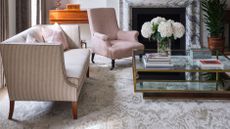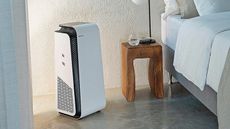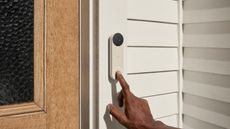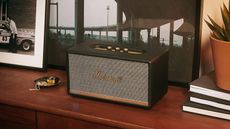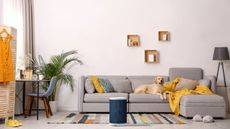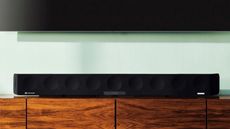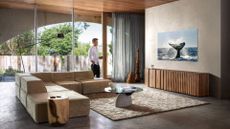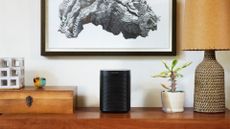Best air purifier 2023: 8 smart designs for cleaner, healthier air at home
Our ranking of the best air purifiers to eliminate irritants, pollution and dust from your environment
- (opens in new tab)
- (opens in new tab)
- (opens in new tab)
- Sign up to our newsletter Newsletter
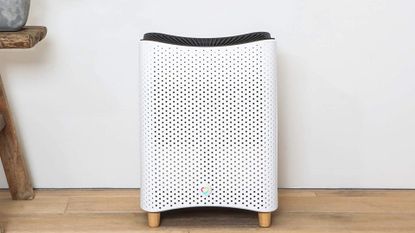

Pollution, dust, pet dander, allergens, and germs are an unfortunate part of everyday life but bringing one of the best air purifiers into your space mean you can reduce the number of unwanted pollutants, and even learn more about the air around you.
Air purifiers work by filtering the air in a space using an internal fan that sucks in surrounding air, then pushes it through several layers of filtration, dispersing clean air into your environment. Air purifiers can reduce and even eliminate unwanted irritants and particles like dust, pet hair, smoke. Some can go as far as working to remove odors and even viruses. In doing so, air purifiers improve the overall air quality in your home, making them vital for allergy sufferers, and people with asthma or other respiratory issues.
To help you to choose the best air purifier, we've tested the leading products. Whether you're looking for a stylish purifier that will blend in with your carefully chosen décor, or a machine quiet enough for the bedroom, we've found an option for your needs. While not all air purifiers are created equal, the general consensus from experts is that the use of an air purifier is worthwhile, and adds immense health benefits to your home.
The best air purifiers: tried and tested
Why you can trust Homes & Gardens Our expert reviewers spend hours testing and comparing products and services so you can choose the best for you. Find out more about how we test.
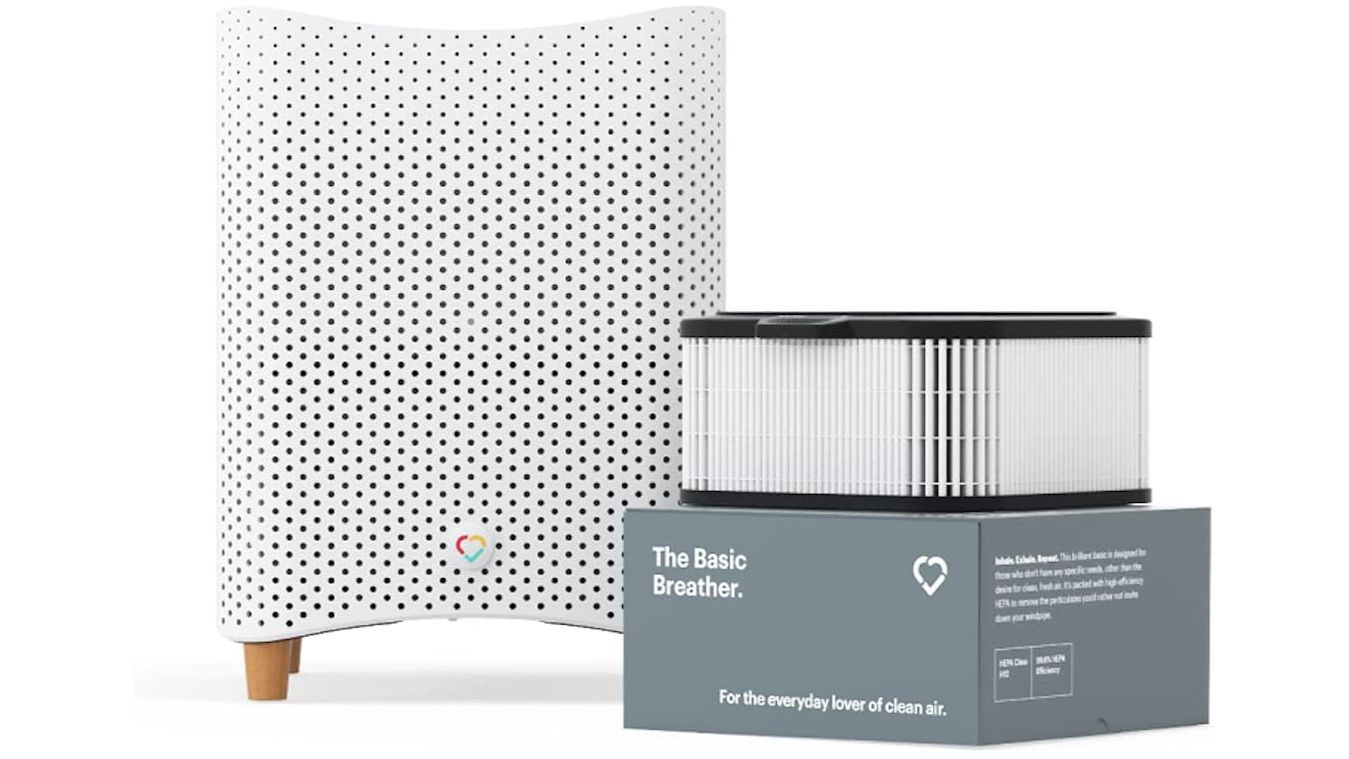

1. Mila Air Purifier
Our expert review:
Specifications
Reasons to buy
Reasons to avoid
Why you should buy it: Competitive price point, Scandi-inspired design, detailed info on air quality, and customizable.
Why we love it
A relative newcomer to the air purification space, Mila has entered strongly with its Smart Air Purifier. Packed with more features than you could wish for and packaged in a modern, Scandi-style rectangular unit, it works as hard at informing you about the quality of your indoor air as it does cleaning it.
The app is the star of the show, with gorgeous graphics that make cleaning the air a fun activity rather than a chore. Settings also allow you to change performance depending on whether you live in an old or new building.
Mila also offers customizable options based on your needs. While it has an all-in-one general filter (H12 HEPA), you can also upgrade with filters designed for pet owners, nurseries, mothers-to-be, general allergies, home renovations, or someone who wants the ultimate in protection, with 'The Over-reactor' featuring H14 HEPA + Formaldeyhyde-targeted carbon.
Good to know
The product is quite large, but its wooden legs and white casing mean it will look smart and stylish in most spaces.
The only criticism we had is how overwhelming the purifier can be over time, picking up the smallest change in air quality and making it seem at times like you're waging war against pollutants. That could be a positive for many people, however, and in no way diminishes how impressive it is.
This air purifier is with our reviews team. These are our thoughts so far.
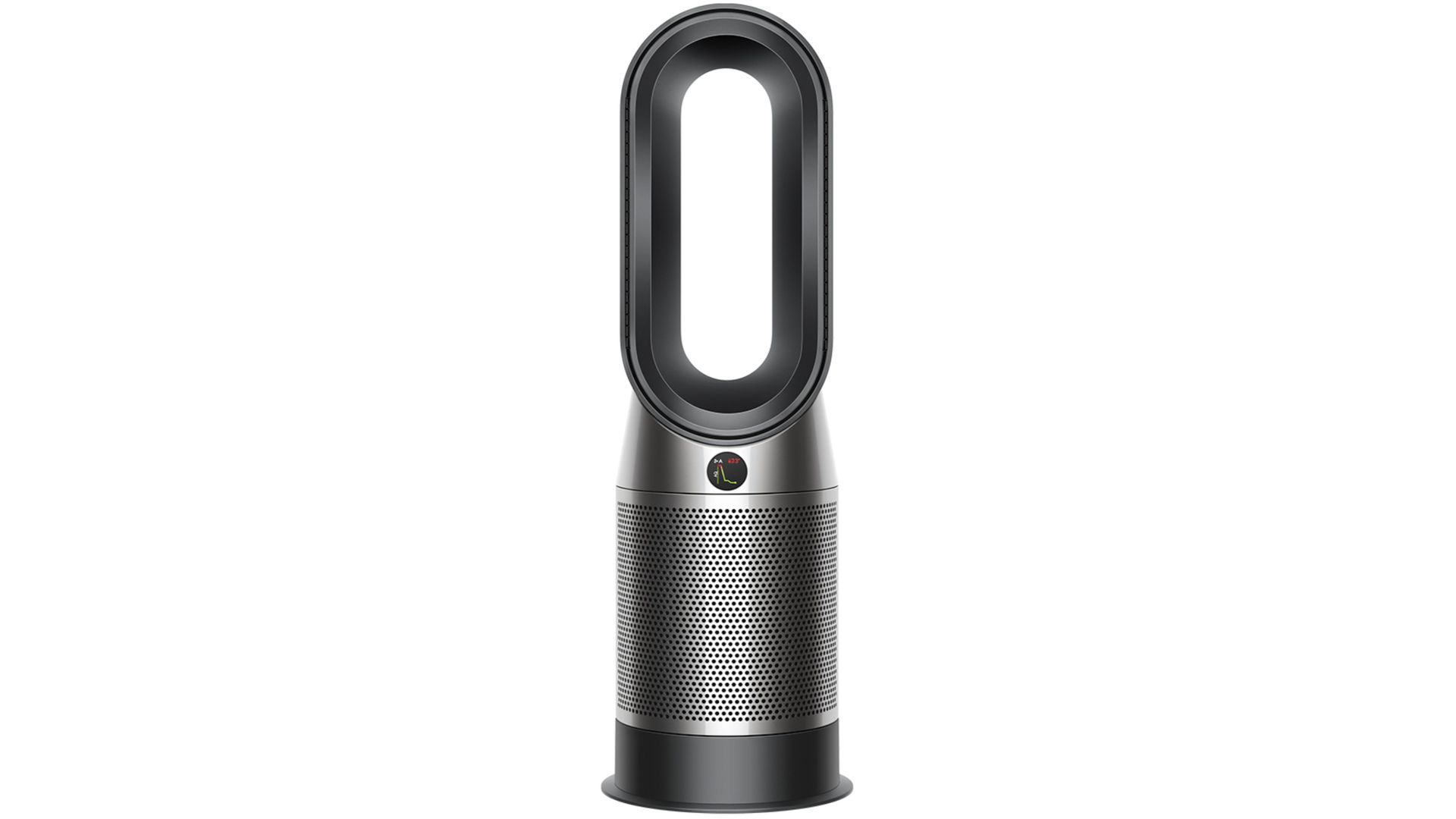
2. Dyson Purifier Hot+Cool HP07
Specifications
Reasons to buy
Reasons to avoid
Why you should buy it: Purifies, heats and cools.
Why we love it: Carving out a significant space in the clean air arena, Dyson offers some of the most innovative air care solutions. Today we're talking about the unique position of the Dyson Purifier Hot+Cool HP07: it works to clear dust and pollutants from your environment and has the added functionality of keeping you warm, or cool, making it a superstar all year long.
The purifier is fantastic if you already have a smart home, allowing you to control it with Alexa voice commands, or you can use the app and remote control provided to set the fan speed, switch to night mode, set timers and so much more.
The small display on the front shows you in-the-moment data about any nasties in the air, or you can really dig into the numbers via the app.
Good to know
We've subbed out our previous pick, the HP04 as it appears to be sold out or discontinued... we're waiting to hear back on its prognosis, but in the meantime, the HP07 features Dyson's latest tech, with the core differences being very minor, though new marketing claims say the HP07 cleans 50% better. We read some reviews that mention a low whining or whistling noise over time, that Dyson says should not be happening and is proactive in inviting these users to reach out to their support team.
This air purifier is with our reviews team. These are our thoughts so far.
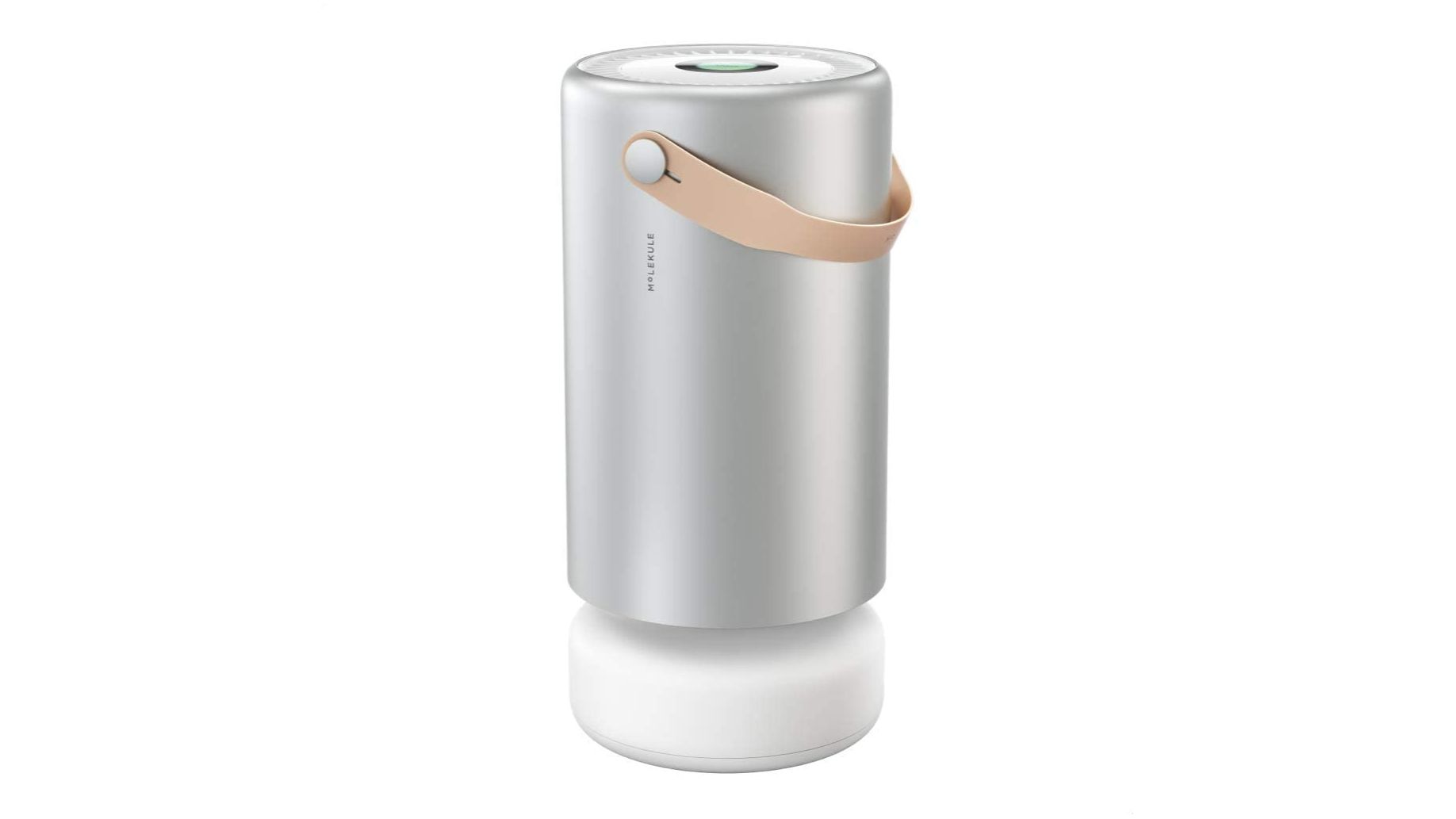
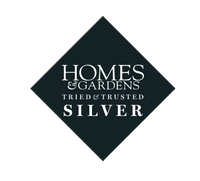
Specifications
Reasons to buy
Reasons to avoid
Why you should buy it: sleek design with 360-degree air purification, medical grade, unique PECO tech, insightful analytics.
Why we love it:
Molekule is everything you could want in an air purifier: its sleek design fits nicely into your decor, quickly jumps into action with any changes in the air, and offers detailed insight into your air including VOCs, particle counts, carbon dioxide, and humidity.
I’ve placed mine in an open floor plan area that encompasses my kitchen, breakfast room, and living room, and I’ve almost forgotten it's there, it's so quiet.
The Molekule Air Pro can purify spaces up to 1,000 sq. ft. using proprietary PECO technology – going beyond the standard HEPA filter that captures airborne particles but follows the principles of chemistry to capture and destroy pollutants like mold, VOCs, allergens, viruses, and bacteria – and has been cleared for medical use. The Air Pro has a 360-degree air intake design at the bottom of the machine, where the air flows through outer filter layers to trap larger particles and slow down chemicals. It goes through the PECO filter, where it goes through an oxidation process activated by LEDs. The cycle is completed in the form of the purified air dispersed from the top in a 360-degree motion as well.
Good to know
Though if you don’t need something that can fit rooms up to 1,000 sq. ft., I imagine you’ll get on just fine with the Mini, for spaces up to 250 sq. ft.
Replacement filters are pretty expensive and last about six months. Though, if you participate in the auto-ship when filter life gets low, it’ll auto-ship a new filter for $99, as opposed to $160. Due to its sophisticated suite of sensors, when the filter is beyond the recommended usage, the machine automatically stops working and is also intelligent enough to identify and reject any third-party filters.
Due to the PECO technology, the subtle Blue UV light that emits from the machine could disrupt light-sensitive sleepers if placed in a bedroom.
Our full Molekule Air Pro review goes into more details.

Specifications
Reasons to buy
Reasons to avoid
Why you should buy it: Great price point, compact size yet large coverage, quiet
Why we love it
Though Dreo may not be a household name just yet, the tremendous value and performance that it presented, makes the Dreo Macro Pro Air Purifier a force to be reckoned with. The Dreo Macro Pro can remove pet dander, pollen, and VOCs in a speedy manner (up to five air changes in an hour) and has a 99.99% removal rate of H1N1, E. Coli, Salmonella, S. aureus, and Candida albicans with its three-stage HEPA filtration system and 360-degree design. It has three-speed settings and Turbo mode and quiet sleep mode though the convenient Auto feature means that the machine can automatically adjust according to what is detected in the air. Our tester Alex Temblador used this small, yet mighty device in her dusty, 100-year-old house and remarked on the improvement in her home’s air quality.
Also, we were impressed at just how affordable it is to upkeep and maintain… a filter replacement is under $30.
Good to know
It can cover rooms large and small, though more air changes more frequently in smaller spaces. It can sit on the floor or a tabletop, though some sort of handle would be nice. It doesn’t have any app connectivity or smart features per se, but lets you easily monitor current air changes with a color indicator.
Our Dreo Macro air purifier review goes into more detail.
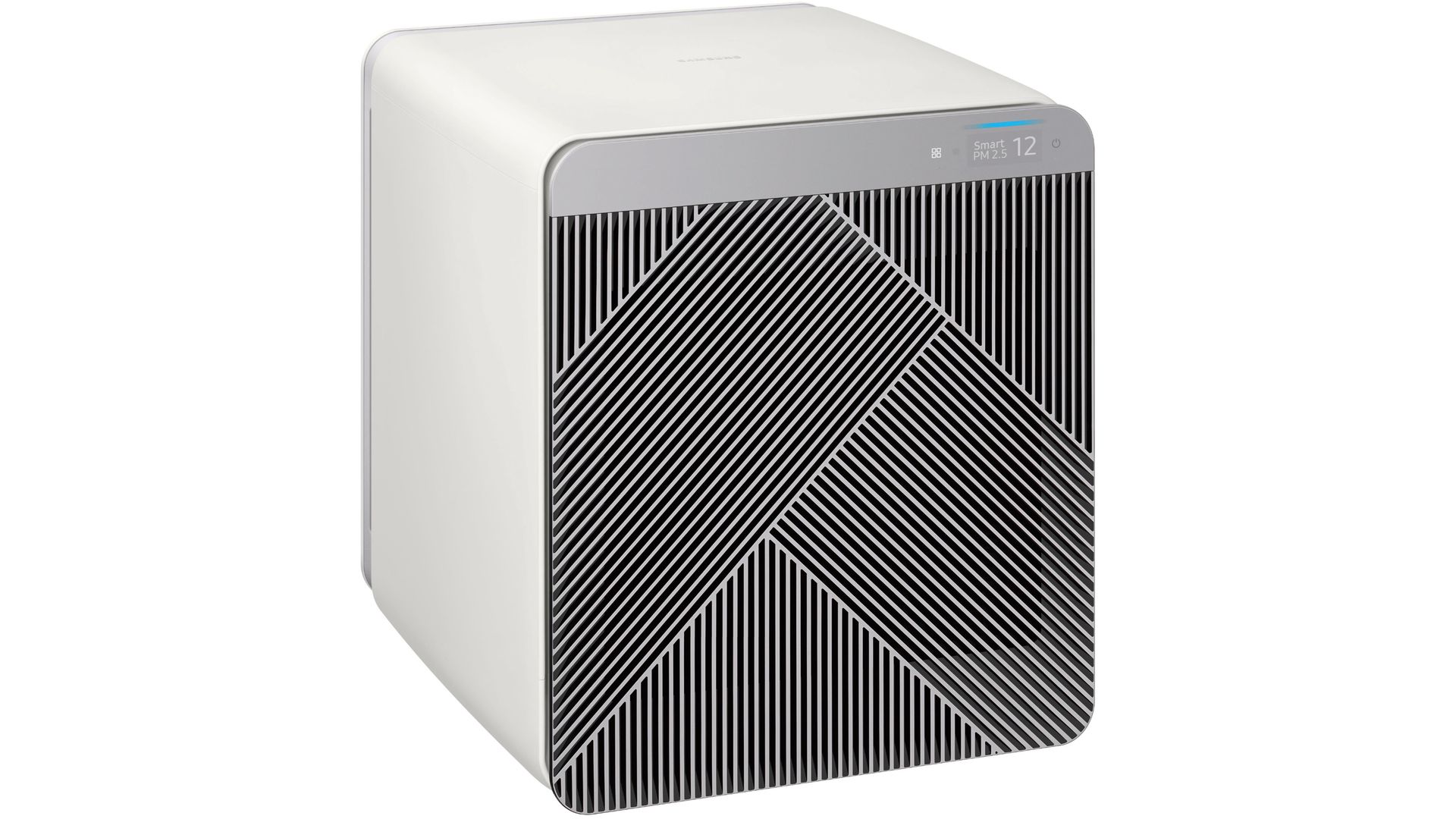

Specifications
Reasons to buy
Reasons to avoid
Why you should buy: Design-forward design with smart settings and powerful capabilities
Why we love it
My first impressions of the Samsung BESPOKE Cube revolved around its stylish geometric design, but what left me most excited was its smart and unique features: like a pet mode, wind-free mode, and tons of data insight on the Smart Things App.
It’s also quite nifty for pet owners, with a 5-layer filtration system that keeps pet odors and hair in mind with the design. Or you can simply let the BESPOKE do its thing and run on SMART mode, where it continuously adapts to the environment in real-time and senses impurities by continually analyzing the indoor air quality. It typically operates at an imperceptible level.
Good to know
It has a pretty elevated price point and works best in smaller spaces up to 350 sq. feet. For this reason, we think it’s best purchased on sale. It’s best suited for a bedroom, office, or living room as opposed to an open floor plan style space.
Also, unlike other machines, Samsung recommends checking and rinsing the reusable pet filter every two weeks, suggesting more upkeep than other machines. Though in full transparency, with my daily and busy life, I'm not thinking about checking up on my air purifier, so I have gone longer than 2 weeks without washing the filter, and the good news is everything has been okay.
Our Samsung BESPOKE air purifier review has more details.


6. Levoit Core 300 True HEPA Air Purifier
Our expert review:
Specifications
Reasons to buy
Reasons to avoid
Why you should buy it: Entry level option with decent power.
Why we love it
The lowest-cost option on our list, the Levoit Core 300 is a great option for those who are conscious about how much power a traditional air purifier may consume.
The Core 300 allows you to have more control over how you use it, with four different timer settings. With 2H, 4H, 6H, and 8H options, you can choose how long you want the machine to run without needing to physically switch it off. Ideal for putting in the kitchen to eliminate food odors after cooking.
Small and compact with a nice design, it’s also capable of being tucked away in any room without sticking out too much and is light enough to be moved from room to room if you desire.
Good to know
The Levoit Core 300 doesn't have the bells and whistles of other machines in this guide, like smart settings or detailed information about your air, but it does come at one of the most aggressive price points. Its small design makes it useful for tabletop placement, and it's best suited for smaller spaces, like bedrooms and home offices.


Specifications
Reasons to buy
Reasons to avoid
Why we love it
Using technology developed at MIT and designed and made in Switzerland, the Aeris Aair Lite is an advanced air purifier that, according to outside tests coordinated by the company, is able to filter and kill around 94% of the respiratory droplets that spread Covid-19.
Now it's important to understand that no air purifier will eliminate the risk of viruses, but it can provide a little peace of mind. The Aair Lite uses antibacterial and antimicrobial filters on its mesh (and interchangeable) cover alongside its HEPA filter to go the extra mile for the health-conscious.
Good to knows
While the top two speed levels (of five) were a little noisy, the purifier was whisper-quiet on lower settings and perfect for the bedroom or any small space around the home. I've been using this air purifier consistently for over a year, and while I've been enjoying it, I've felt the need to deduct my original ranking of 4.5 stars to 4 stars due to the inventory shortages I experienced when trying to order replacement filters. Since we've tested, the company has been acquired by iRobot.
Our Aeris Aair Lite air purifier review has more details.
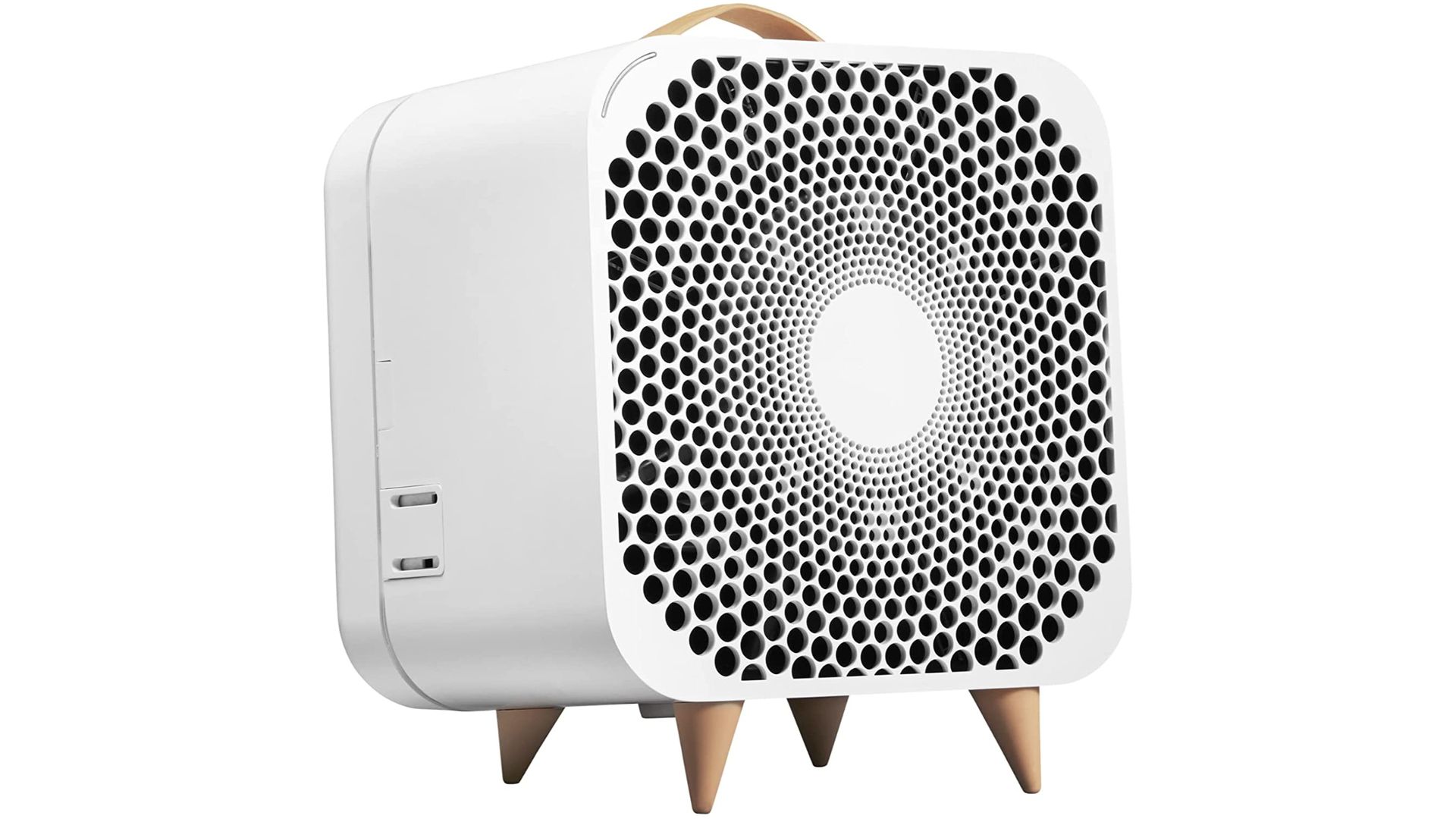

Specifications
Reasons to buy
Reasons to avoid
Why you should buy it: Good looking air purifier and fan combo
Why we love it
Dyson may be the most famous brand for combining cooling and air purifying into one device, but Blueair has its own offering in the form of the Blueair Blue Pure Fan. Primarily working as a fan with a HEPA filter built-in, it allows you to be sure that the air you're breathing is as clean as possible.
The design is lovely, Scandi-inspired with wood-effect legs and a leather handle on top, and the rear benefits from changeable pre-filters in a choice of colors including blue, pink, and yellow.
Good to know
Despite not having an oscillation feature, airflow is put out across 90 degrees because of the design of the fan's face.
Our Blueair Blue Pure Fan air purifier review (opens in new tab) has more details.
How we choose and review air purifiers
In our search for the very best air purifiers to recommend to our readers, we try to have hands-on experience with as many models from as many brands as possible. This can be done by editors, staff writers, or freelancers, but tests will be conducted with the same methodology wherever appropriate.
Those we have tried will have a star rating based on factors such as design, performance, and ease of use, among other things.
However, it is not always possible to test all of the best products, but where we haven't it will be clearly marked in this guide. Those we have tried will have a star rating based on factors such as design, performance, and ease of use, among other things. For those
For more insight into our hands-on review process, refer to our Homes & Gardens review guidelines.
How to choose the best air purifier for your home
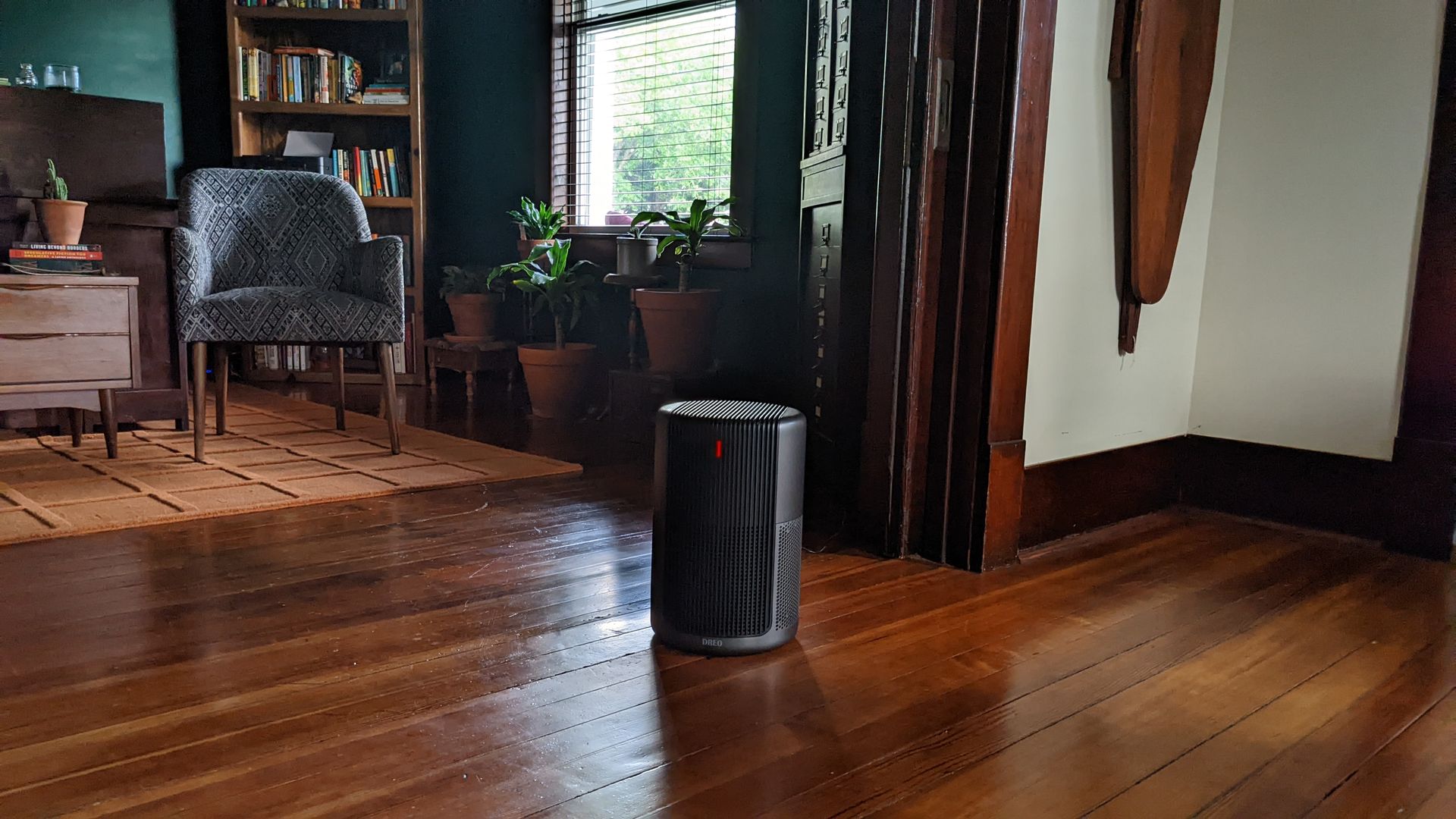
Which air purifier should you get for allergies? Any of our top picks should help with any allergy issues.
Which air purifier should you get for pets? For families with fur babies who shed consistently, or maybe you want to get rid of that elusive pet smell, an air purifier with activated carbon can help, like the Samsung BESPOKE Cube (opens in new tab).
Which air purifier should you get for a bedroom? A tabletop-sized design is adequate for a bedroom, or at least one that can protect spaces up to 300 sq. ft. You’ll want to emphasize designs that run quietly and have a sleep mode to minimize any disturbances. For maximum benefit, place it at a level near where you sleep. The Levoit Core 300 (opens in new tab) should match your needs.
Which air purifier for smoke? Those who smoke or live in areas with high rates of smog, pollution and smoke in the atmosphere will require a design that can get rid of smoke particles in the air, as well as the smell, and the hazards that come with breathing in secondhand smoke. Smoke particles produce some of the finest particles, but the good news is, HEPA filters are designed to trap smoke particles, but you’ll want a design with frequent air changes compared to the size of the room. We’ve noticed that the Molekule (opens in new tab) was highly reactive to eradicating smoke from the air, as did the Aair Lite (opens in new tab).
What to consider when choosing an air purifier
Coverage: You’ll want to choose an air purifier that can cover spaces up to 350 sq. ft, though, it’s always better to go with a design that can handle larger spaces, as it cant treat smaller rooms faster. Air purifiers are not designed to filter your entire home, you’d need to invest in a whole home filtration system for that; but individual rooms
Filtration: HEPA is the golden standard when it comes to air purification, but the emphasis on the standard, as HEPA filters solely trap airborne dust particles, dander, and other contaminants. For more specialized needs, you can look for designs that incorporate activated carbon to kill odors and gases, and UV technology to can kill and remove viruses. Negative Ion and Ozone filters are less popular and effective, and not part of our considerations for this list.
Noise levels: Air purifiers are meant to run quietly in the background, and the best ones, will be almost imperceptible, though they do create some ambient noise. Depending on the speeds, the sound will vary. Many brands will list their decibel range on packing or within its product description, but a typical range of sound level for an air purifier is between 15 dB(A) for a very quiet air purifier on its lowest setting to 90 dB(A) on its highest, which reaches levels of what a vacuum cleaner may produce… though its not uncommon for individuals to reserve the highest settings to purify when they are not in the room.
Air Quality Sensors: Not only do we want cleaner air, a lot of us want to know about what’s going on with our air, and a growing number of models have particle counters that can detect how polluted your air is and adjust according. Some designs with app connectivity offer the ability to offer insight to your air quality with specific information about what irritants are in your air.
Controls: Air purifiers can be controlled on the device, while some can be adjusted via a remote, an app, or even smart assistants.
Certifications: Manufacturers love to market their products with claims about what they can do. Look for third-party certifications such as Energy Star, or the Association of Home Appliance Manufacturers (opens in new tab) (AHAM), which uses the Clean Air Delivery Rate (CADR) to base its decision on an air cleaner’s efficiency across a period of time. The higher the number, the best the unit’s efficiency, though the CADR number should be equal to at least two-thirds of the room’s area.
Continued Costs: Also consider the filter life of your device, and whether it is washable or needs to be replaced at an extra cost. True HEPA filters are not washable, but some units have pre-filters that are washable to extend the life of the HEPA filters. We’ve seen filters last from around six months to up to a year, and depending on the device, replacement filters can cost anywhere from $30 to $150, so almost all air purifiers require a recurring cost to keep running. The good news is that they are still considered pretty energy efficient, and shouldn’t add a significant amount to your electricity bill.
Size: Air Purifiers come in all shapes and sizes that range from large floor units to small tabletop designs. Go for a size proportionate to your space, and that is placed in an area with unrestricted airflow.
Price: We always advise you to go with the best that you can afford, but you have likely noticed the vast range of price points when it comes to air purifiers from under $50 to over $1000. These factors we’ve discussed all contribute to the price.
Why buy an air purifier?
While ventilating your space by opening a window to let in fresh air is beneficial, an air purifier takes it a step further, by not only circulating air but by removing pollutants from the space.
If you live in a city or densely populated area greatly affected by pollution or smog, or even live in a region where wildfires may occur an air purifier is especially important for keeping the outdoor air quality from affecting your indoor air quality.
But perhaps just as shocking, your indoor air quality could be just as poor, if not worse when you factor in the laundry list of possible irritants such as airborne bacteria, mold, VOCs, cooking smells, pet dander, and dust.
Air purifiers can help alleviate allergies and limit the spread of airborne bacteria as well as reduce odors from cooking, pets, and smoke. Some even claim to help reduce the spread of viruses Covid-19, but we’d still be weary of any of those claims.
Pet owners may want an air purifier to help neutralize odors and trap pet hair and dander.
Nurseries are also popular places to use an air purifier as new parents want to ensure the very best air quality for their children.

What is a HEPA filter?
HEPA or ‘high-efficiency particulate air’ filters as defined by the Environmental Protection Agency (EPA) (opens in new tab) can remove more than 99.97% percent of all airborne pollutants 0.3 microns or larger. A micron is a microscopic particle, less than 1/25,400 of an inch long. HEPA filters that can filter 99.97% of particles as small as .1 microns are considered medical grade.
HEPA filters are a pleated mechanical design, typically made of fiberglass or polypropylene, that traps particles such as dust, pollen, mold, bacteria, and any airborne particles.
Choose products that feature languages such as HEPA, Absolute HEPA, or HEPA True. HEPA-like or HEPA-Type can still collect dust, lint, pet dander, and pollen, but they don’t meet the same industry standards.
How noisy are air purifiers?
The products on our list range from a whisper-quiet 20dB to a rather noisy 52dB but it’s worth noting that many in the lower range refer to when an air purifier is in its lowest and least powerful, mode. It really depends on the model, but a big selling point of air purifiers is ones that work quietly. If using an air purifier in the bedroom, look for designs that offer sleep modes, which limit sound and light that could come from the machine.
You've reached the end of the page. Jump back up to the top ^

Caroline has worked with the Homes and Gardens team since the start of 2021, bringing her background in technology with her. She’s passionate about incorporating smart devices into the home without compromising on style, and her own interior design style has evolved over the years to reflect this.
-
-
 7 expert-approved methods to remove candle wax from carpet
7 expert-approved methods to remove candle wax from carpetCleaning professionals share their tips on how to remove candle wax from carpet
By Millie Hurst • Published
-
 Are you making these critical design mistakes in your small home office? Experts reveal 7 they always avoid
Are you making these critical design mistakes in your small home office? Experts reveal 7 they always avoidWant to know what's wrong with your workspace? Experts reveal the top 7 design mistakes we're making in our small spaces
By Zara Stacey • Published
-
 Blueair HealthProtect 7470i Air Purifier review
Blueair HealthProtect 7470i Air Purifier reviewWe test the Blueair HealthProtect 7470i, an air purifier that promises to keep you healthy as it cleans your air
By Caroline Preece • Published
-
 Best wireless doorbell: the best wireless door chimes for your front door
Best wireless doorbell: the best wireless door chimes for your front doorThe best wireless doorbells to make deliveries easier and keep your home and packages safe
By Caroline Preece • Last updated
-
 Best smart speaker: make life easier with the top smart assistant speakers
Best smart speaker: make life easier with the top smart assistant speakersThe best smart speakers for setting routines, listening to music and wireless streaming from Amazon, Sonos, Google and more
By Caroline Preece • Published
-
 Best dehumidifier: our top picks to reduce mold and bacteria at home
Best dehumidifier: our top picks to reduce mold and bacteria at homeThe best dehumidifiers to stop mold in its tracks, from TaoTronics, LG, Meaco and more
By Caroline Preece • Last updated
-
 Aeris Aair Lite Air Purifier review
Aeris Aair Lite Air Purifier reviewWe reviewed the Aeris Aair Lite, a Swiss-made air purifier with smart and stylish features. Here are our candid thoughts
By Jaclyn Turner • Last updated
-
 Best soundbar: the best speakers for your home theater
Best soundbar: the best speakers for your home theaterOur choice of the best soundbars for upgraded sound at home, from Sonos, JBL, Bose and more
By Caroline Preece • Last updated
-
 Best TV: OLED, QLED, 4K and 8K sets to enhance your movie nights
Best TV: OLED, QLED, 4K and 8K sets to enhance your movie nightsThe best TVs that promise to modernize your viewing experience, from Samsung, Sony and more
By Caroline Preece • Last updated
-
 Best Alexa speakers: our favorite smart speakers from Amazon
Best Alexa speakers: our favorite smart speakers from AmazonThe best Alexa speakers to complete your smart home setup and boost your listening
By Caroline Preece • Last updated
